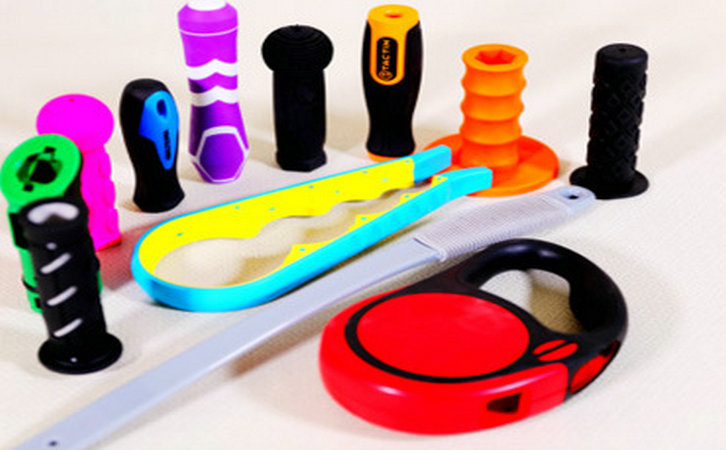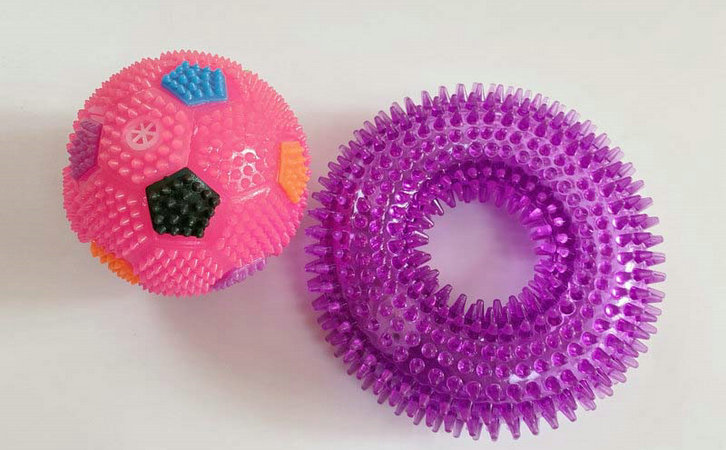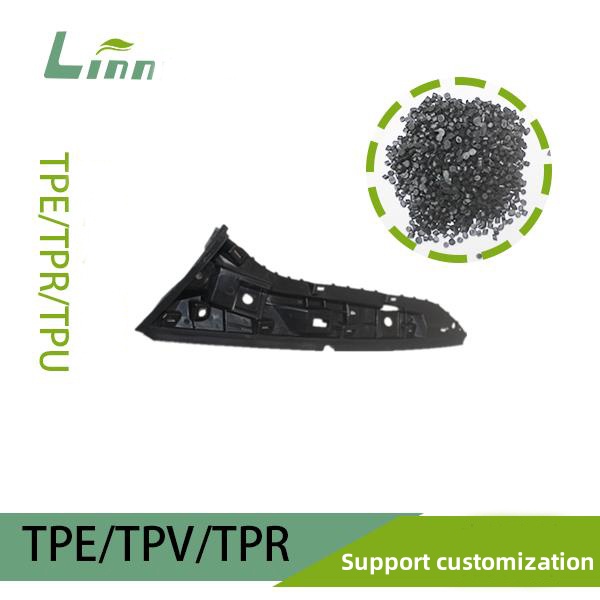I still vividly recall the frustration on a client’s face when their TPR (Thermoplastic Rubber) parts kept failing adhesion tests, despite using a primer. The paint was peeling, the coating was patchy, and the team was at their wit’s end. As someone who’s spent over a decade troubleshooting coating issues in the materials industry, I’ve seen this scenario play out more times than I can count. TPR primers, designed to boost adhesion between TPR’s low-energy surface and coatings, can sometimes underperform, leading to weak bonding, uneven finishes, or outright failure. When the primer’s effect isn’t up to par, it’s not just a production hiccup—it can halt entire projects. In this article, I’ll walk you through why TPR primers might fall short, how to diagnose the issue, and practical solutions to get your coatings sticking like they should. Drawing from my hands-on experience, I’ll share insights that feel like a conversation with a friend who’s been in the trenches. Let’s dive in and fix those primer problems!
Understanding TPR Primers and Their Role
Before we tackle why primers fail, let’s get a handle on what TPR primers do. TPR, a thermoplastic elastomer based on SBS (Styrene-Butadiene-Styrene) or SEBS (Hydrogenated Styrene-Butadiene-Styrene), is prized for its flexibility and durability in products like shoe soles, grips, and seals. However, its low surface energy makes it notoriously hard for paints, adhesives, or coatings to stick. That’s where primers come in—they act as a chemical bridge, modifying the TPR surface to improve adhesion.
A good primer penetrates the TPR surface, creates a reactive layer, and ensures coatings bond tightly. But when the primer’s effect is unsatisfactory—think peeling paint, spotty adhesion, or weak bonding—it’s often due to material mismatches, application errors, or environmental factors. I’ve spent years debugging these issues, and I’ll break down the causes and solutions to help you get back on track.

Common Reasons TPR Primers Fail
When a TPR primer doesn’t deliver, the root cause usually falls into one of four categories: material issues, application errors, surface preparation problems, or environmental factors. Below, I’ve detailed the main culprits based on my experience in coating plants and labs.
1. Material-Related Issues
Incompatible Primer
Not all primers are suited for every TPR formulation. SBS-based TPR often requires solvent-based primers (e.g., chlorinated polyolefins), while SEBS-based TPR may need specialized primers for its more stable surface. Using the wrong primer leads to poor bonding or no effect at all.
Low-Quality Primer
Cheap or outdated primers may lack the active ingredients needed for strong adhesion. I’ve seen primers past their shelf life (typically 6-12 months) fail to activate the TPR surface properly.
TPR Formulation Issues
TPR with high plasticizer content (e.g., mineral oil) can cause primer failure. Plasticizers migrate to the surface, creating an oily layer that repels the primer. Similarly, excessive fillers like calcium carbonate can reduce surface reactivity.
2. Application-Related Issues
Incorrect Application Method
Primers can be applied by spraying, brushing, or dipping, but each method requires precision. Over-application leads to pooling and weak bonding, while under-application leaves patchy coverage.
Insufficient Drying Time
Primers need time to dry and react with the TPR surface (typically 5-15 minutes at room temperature). Rushing this step can prevent proper bonding, causing coatings to peel.
Improper Mixing
Some primers require mixing with thinners or activators. Incorrect ratios (e.g., too much thinner) dilute the primer’s effectiveness.
3. Surface Preparation Issues
Contaminated TPR Surface
Oil, dust, or mold release agents on the TPR surface can block primer adhesion. This is common in parts straight from molding without cleaning.
Inadequate Surface Cleaning
Even clean-looking TPR may have microscopic residues. Failing to clean with solvents like isopropyl alcohol or acetone can weaken primer performance.
Surface Texture
A TPR surface that’s too smooth or too rough can affect primer adhesion. Overly smooth surfaces limit mechanical bonding, while rough surfaces may trap air, reducing contact.

4. Environmental and Post-Application Factors
Humidity and Temperature
High humidity (>70%) or extreme temperatures (below 15°C or above 35°C) can disrupt primer curing. I’ve seen primers fail in humid factories where moisture interfered with drying.
Coating Incompatibility
The primer must be compatible with the topcoat (e.g., polyurethane, acrylic). A mismatch can cause the coating to lift or peel, even if the primer initially adheres.
Post-Processing Stress
Bending, stretching, or UV exposure after coating can stress the primer layer, leading to delamination. This is more common with SBS-based TPR, which is less UV-resistant.
Here’s a table summarizing these causes and their symptoms:
|
Cause Category |
Specific Issue |
Symptoms |
Typical Fixes |
|---|---|---|---|
|
Material |
Incompatible primer |
Poor coating adhesion |
Match primer to TPR type (SBS/SEBS) |
|
Material |
Low-quality primer |
Weak or no bonding |
Use fresh, high-quality primer |
|
Material |
High plasticizer content |
Oily surface, peeling |
Reduce plasticizer, test TPR formula |
|
Application |
Incorrect application |
Patchy or thick coating |
Optimize spraying/brushing technique |
|
Application |
Insufficient drying |
Sticky or weak primer layer |
Allow 5-15 min drying at 20-25°C |
|
Application |
Improper mixing |
Uneven adhesion |
Follow mixing ratios precisely |
|
Surface Prep |
Contaminated surface |
Spotty adhesion |
Clean with isopropyl alcohol or acetone |
|
Surface Prep |
Inadequate cleaning |
Weak bonding |
Use proper solvent cleaning |
|
Environmental |
High humidity/temperature |
Poor primer curing |
Control environment (15-35°C, <70% humidity) |
|
Environmental |
Coating mismatch |
Coating lifts off |
Match primer to topcoat chemistry |
Diagnosing TPR Primer Issues
When the primer’s effect is lackluster, a systematic approach helps pinpoint the problem. Here’s how I diagnose issues, based on years of troubleshooting:
Inspect the Failure: Check if the coating peels uniformly (suggesting material or primer issues) or in patches (indicating surface or application problems).
Test the Primer: Apply the primer to a clean TPR sample and check adhesion after drying (e.g., using a cross-hatch test, ASTM D3359). Poor adhesion suggests an incompatible or low-quality primer.
Analyze the TPR: Test the TPR surface for oiliness (wipe with a cloth to detect plasticizer migration) or contamination (use a solvent wipe test).
Review Application: Verify application method, drying time, and mixing ratios against the primer supplier’s guidelines.
Check Environmental Conditions: Measure factory temperature and humidity. High humidity or extreme temperatures often disrupt curing.
Test Coating Compatibility: Apply the primer and topcoat to a test piece. If the coating lifts, the issue may be a mismatch.
I once helped a client whose TPR shoe soles had patchy paint adhesion. The primer seemed fine, but a solvent wipe revealed mold release residue. After proper cleaning with isopropyl alcohol, adhesion improved dramatically. Diagnosis is half the battle.

Solutions to Improve TPR Primer Performance
Fixing unsatisfactory primer effects requires targeted solutions. Below, I’ve outlined practical fixes for each cause, drawn from my experience:
1. Material Solutions
Choose the Right Primer: Use solvent-based primers (e.g., chlorinated polyolefins) for SBS-based TPR and specialized primers for SEBS. Consult the TPR supplier for recommendations.
Source Quality Primers: Use fresh primers with active ingredients (check shelf life, typically 6-12 months). Request technical datasheets and adhesion test data from suppliers.
Optimize TPR Formulation: Reduce plasticizer content (e.g., to 20-30% by weight) to minimize migration. Test TPR samples for surface oiliness before priming.
2. Application Solutions
Refine Application Technique: For spraying, use a fine nozzle and maintain a 15-20 cm distance. For brushing, apply thin, even coats. For dipping, ensure uniform immersion and withdrawal speed.
Allow Proper Drying: Let the primer dry for 5-15 minutes at 20-25°C, per supplier guidelines. Use a fan or low-heat oven (e.g., 40-50°C) to speed up drying in humid conditions.
Mix Correctly: Follow the primer’s mixing ratios (e.g., 1:1 with thinner or activator). Use a calibrated mixing tool to ensure accuracy.
3. Surface Preparation Solutions
Clean Thoroughly: Wipe TPR surfaces with isopropyl alcohol or acetone to remove oils, dust, or mold release agents. Use lint-free cloths to avoid residue.
Enhance Surface Texture: Lightly sand overly smooth TPR surfaces (e.g., with 400-grit sandpaper) to improve mechanical bonding. Avoid over-sanding, which can create debris.
Test Surface Cleanliness: Perform a water break test—apply a drop of water to the TPR. If it beads up, the surface is still contaminated and needs more cleaning.
4. Environmental and Coating Solutions
Control Environment: Maintain factory conditions at 15-35°C and <70% humidity. Use dehumidifiers or air conditioning in humid climates.
Match Primer and Coating: Ensure the primer is compatible with the topcoat (e.g., polyurethane primer with polyurethane paint). Test adhesion with a cross-hatch test (ASTM D3359).
Protect Post-Coating: Store coated parts in a clean, UV-protected environment to prevent degradation. For SBS-based TPR, consider UV-resistant topcoats.
I once worked with a grip manufacturer whose TPR coatings were peeling despite priming. The issue was a combination of high humidity (80%) and an incompatible acrylic topcoat. We switched to a polyurethane topcoat and installed dehumidifiers, achieving perfect adhesion.

Testing and Quality Control
To ensure primer success, rigorous testing is essential. Here’s my approach:
Primer Adhesion Testing: Use a cross-hatch test (ASTM D3359) to check primer-coating adhesion. Score the coated surface, apply tape, and pull—if minimal coating lifts, the primer is working.
Surface Cleanliness Testing: Perform a solvent wipe test or water break test to confirm a clean TPR surface before priming.
Environmental Monitoring: Use a hygrometer and thermometer to track factory conditions. Aim for 20-25°C and 40-60% humidity.
Material Testing: Analyze TPR for plasticizer migration (wipe with a cloth) or primer quality (check shelf life and composition).
Third-Party Validation: For critical applications, send coated samples to labs like SGS or Intertek for adhesion and durability testing.
Testing caught a primer issue for a client’s medical TPR parts. The primer was outdated, with degraded active ingredients. Switching to a fresh batch restored adhesion, saving the production run.
Case Studies: Fixing TPR Primer Issues
Here are two real-world examples from my career:
Case 1: Patchy Shoe Sole Coatings
A footwear client struggled with uneven paint adhesion on SBS-based TPR soles. The primer was applied by spraying, but patches peeled off. Testing revealed mold release residue and over-application of primer. We cleaned the soles with isopropyl alcohol, reduced the spray volume, and extended drying to 10 minutes. The coatings adhered perfectly, passing durability tests.
Case 2: Weak Medical Grip Adhesion
A medical device manufacturer reported poor primer performance on SEBS-based TPR grips. The primer was compatible, but high humidity (75%) slowed curing. We installed dehumidifiers to maintain 50% humidity and switched to a faster-curing primer. Adhesion improved, and the grips met ISO 10993 standards (ISO 10993 for medical devices).
These cases show how combining material, application, and environmental fixes can solve primer issues.

Preventing Primer Issues Long-Term
To avoid primer problems in future runs, take these proactive steps:
Partner with Suppliers: Work with TPR and primer suppliers to select compatible products. Request adhesion test data and application guidelines.
Train Staff: Educate workers on proper cleaning, priming, and coating techniques. Regular training reduces errors.
Maintain Equipment: Clean spray guns, brushes, or dip tanks after each use to prevent contamination. Calibrate equipment for consistent application.
Standardize Processes: Document successful parameters (e.g., drying time, mixing ratios) for repeatability across batches.
Invest in Testing: Use adhesion tests and environmental controls to catch issues early. Simulate real-world conditions (e.g., UV exposure, flexing) to ensure durability.
I’ve seen companies save significant costs by standardizing priming processes and testing upfront, avoiding rework and scrapped parts.
Future Trends in TPR Primers
The TPR coating industry is evolving, and primers are getting better. Here are trends I’m excited about:
Eco-Friendly Primers: Low-VOC and water-based primers are emerging, aligning with regulations like the EU’s VOC Directive (EU VOC Directive).
Universal Primers: New primers are being developed to work with both SBS and SEBS TPR, reducing compatibility issues.
Self-Priming TPR: Modified TPR formulations with built-in adhesion promoters are reducing the need for separate primers.
Smart Application Systems: Automated priming systems with sensors ensure consistent application, minimizing human error.
These advancements are making TPR priming more reliable and sustainable, which is great news for manufacturers.

Frequently Asked Questions
Here are answers to common questions about TPR primer issues:
Q1: How do I know if my primer is compatible with TPR?
A: Check the primer’s technical datasheet and test it on a TPR sample using a cross-hatch test (ASTM D3359). Consult the TPR supplier for recommendations.
Q2: Why does my primer work initially but fail later?
A: Post-coating stress (e.g., flexing, UV exposure) or plasticizer migration may weaken adhesion. Use SEBS-based TPR and UV-resistant topcoats for durability.
Q3: Can I skip priming to save time?
A: Rarely. TPR’s low surface energy usually requires a primer for strong adhesion. Test primerless coatings first, but expect weaker results.
Q4: How do I improve primer drying in humid conditions?
A: Use dehumidifiers to keep humidity below 70% or dry primers in a low-heat oven (40-50°C). Choose faster-curing primers if possible.
Q5: What if cleaning doesn’t improve primer performance?
A: If cleaning fails, check for TPR formulation issues (e.g., high plasticizer) or primer-coating mismatch. Test alternative primers or adjust the TPR formula.
Final Words
Dealing with unsatisfactory TPR primer effects can be a real challenge, but it’s a solvable one. From choosing the right primer to perfecting application and controlling the environment, my years in the industry have shown me that attention to detail makes all the difference. Whether you’re coating shoe soles, grips, or medical devices, the key is to diagnose the issue systematically and test solutions thoroughly. I hope this guide gives you the confidence to troubleshoot primer problems and achieve coatings that stick, look great, and last.
If you’re wrestling with a TPR priming issue or just curious about a specific application, leave a comment—I’d love to dive in and help you find answers. Here’s to creating TPR products that perform as beautifully as they look!




